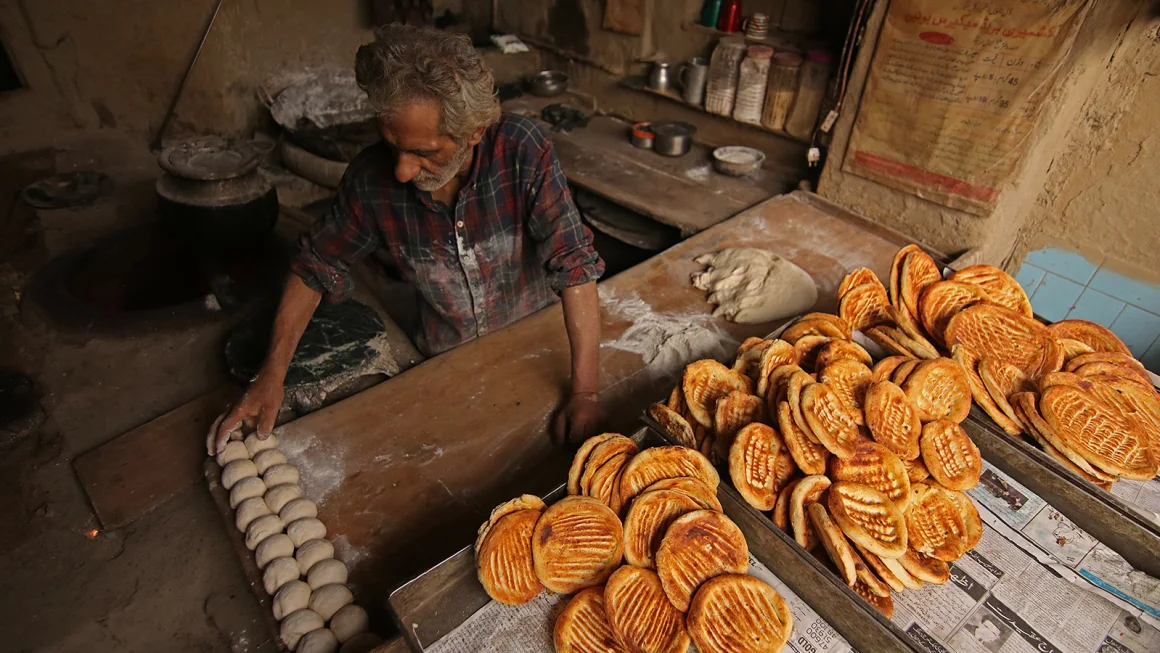Overview
Nestled in the Himalayas, Indian-administered Kashmir, a region renowned for its natural beauty and centuries-old cultural heritage, harbors a lesser-known gem: its rich and unique bread-making traditions. Long before dawn breaks, bakers known as kandurs fire up their clay tandoors to produce an array of breads that are deeply embedded in the region’s identity.
While rice forms the staple diet of Kashmiri households, bread plays a central role in daily rituals and community life. Despite its depth and diversity, Kashmir’s bread culture remains largely undocumented and overshadowed by the region’s turbulent political narrative.
Historical Roots and Significance
Kashmir’s bread-making heritage reflects the influences of the ancient Silk Road, connecting Central Asia, the Middle East, and South Asia. The tandoor itself, originating from the Persian word “tanur,” represents a shared culinary lineage spanning Central and South Asia.
Bread in Kashmir is more than food; it is culture and community. The neighborhood kandurwan (bakery) serves as a hub where locals congregate, exchange news, and indulge in the tactile pleasures of freshly baked girda and lavasa. This bread culture is passed down orally through generations, making it an invaluable yet fragile part of Kashmiri heritage.
Variety of Kashmiri Breads
Kashmir boasts a dazzling variety of breads, each suited for specific times of day or special occasions:
- Girda: A circular, soft bread, often paired with savory noon chai.
- Lavasa: Thin, crisp bread ideal for breakfast or light meals.
- Katlam: A croissant-like flaky bread.
- Tschowor: Sesame-seed-dusted, bagel-like bread eaten in the afternoon.
- Bakarkhani: A festive layered bread, served with mutton dishes or condiments.
- Roth: A sweet, celebratory bread adorned with dry fruits.
Each bread carries its own culinary rituals, such as pairing girda with butter or jam in the morning or enjoying bakarkhani during special celebrations.
Preservation and Evolution
Efforts are underway to preserve and reinterpret Kashmir’s bread traditions. Documentary filmmaker Mehvish Altaf Rather captured the essence of the kandurwan in her film Kandurwan: Baking History, emphasizing bread as a unifying cultural symbol amidst the region’s fraught identity struggles.
Chefs like Jasleen Marwah, Prateek Sadhu, and Vanika Chaudhury are elevating Kashmiri breads to global dining tables. By incorporating traditional techniques with modern culinary approaches, they introduce Kashmiri breads to broader audiences:
- Prateek Sadhu: At his fine dining restaurant Naar, serves bakarkhani with Himalayan condiments.
- Varun Totlani: At Masque in Mumbai, has featured tschowor and katlam.
- Vanika Chaudhury: Her collaborative menu in London celebrated bakarkhani with local twists, like pairing it with koji butter.
Marwah points out the technical parallels between Kashmiri breads and globally revered baked goods like croissants and sourdough, underscoring the craftsmanship involved.
Challenges and Revival
The oral nature of Kashmiri bread traditions poses a challenge to preservation. As bakers remain protective of their knowledge, passing it down requires years of apprenticeship and immersion. Chef Chaudhury, who attempted to learn the craft, recalls being told it would take at least three years to grasp its intricacies fully.
However, with initiatives to spotlight Kashmiri bread culture—through documentaries, cookbooks, and fine dining menus—there is hope for its revival and global recognition. Some advocates even suggest nominating Kashmiri bread-making as a UNESCO Intangible Cultural Heritage, likening its significance to France’s boulangerie tradition.
The Way Forward
Kashmir’s bread culture, a harmonious blend of tradition, community, and artistry, serves as a poignant reminder of the region’s rich yet underappreciated heritage. As chefs and cultural custodians strive to preserve and share these traditions, the world has an opportunity to savor a slice of Kashmir’s culinary legacy.











